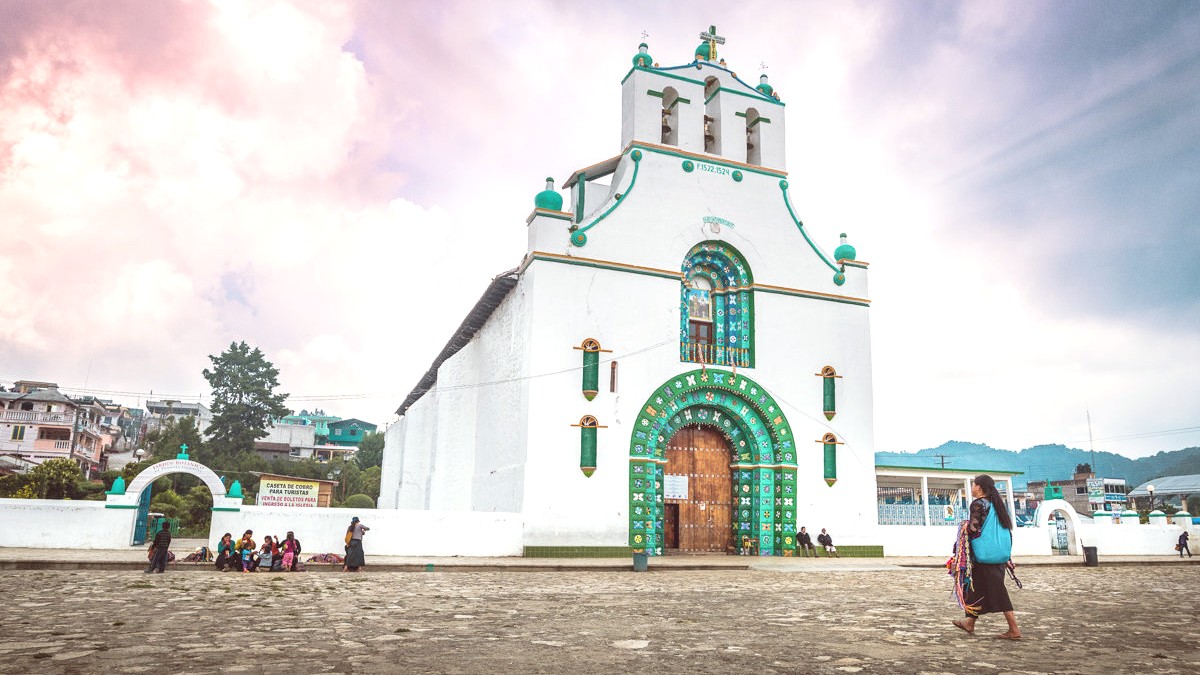
Tabasco And Chiapas, Mexico
The city's high altitude, around 2,200 meters (7,200 feet), creates a distinct climate compared to other parts of Mexico. This results in significant temperature variations.
The dry season, from November to April, brings sunny days, minimal rainfall, and low humidity. Daily temperatures range from 12°C to 20°C (54°F to 68°F). Mornings and evenings are quite chilly.
Temperatures can drop significantly at night, even during the warmer wet season, due to the altitude.
Pack layers year-round to adjust comfortably to temperature changes throughout the day. A warm jacket or sweater is always a good idea.
More Crowds
Ideal weather, dry sunny conditions, festive activities occur during holidays like Christmas and Easter.
Accommodation prices are higher, and attractions are more crowded. Book well in advance.
Moderate Crowds
Weather remains pleasant, especially before heavy rains or as wet season subsides. Fewer crowds compared to high season, and accommodation often presents better deals.
Some rain might occur, notably in May and October. Early mornings are cold in March and November.
Fewer Crowds
Landscapes appear at their most lush and green due to abundant rainfall. Prices for accommodation and some tours are generally lower. Fewer tourists create a more local experience.
Daily afternoon rains can disrupt outdoor plans or make unpaved roads muddy.
The dry season (November-April) presents the best conditions for clear skies and comfortable temperatures for hiking. Boat tours through Sumidero Canyon are notably pleasant during this period.
Day of the Dead celebrations in early November are unique and profound. Local saints' days also feature special events, which can attract large crowds.
The coffee harvest typically runs from October to March, offering tours.
Clear skies of the dry season are excellent for capturing images.
Low season (June-September) often has the best prices for accommodation.
Fewer tourists in low season contribute to a more intimate experience.
Best conditions during the dry season for boat tours.
Mexico welcomes tourists. Visa-free entry is available for citizens of many nationalities.
This is a permit issued upon arrival for tourism, business, or transit. Most nationalities, including US, Canadian, UK, EU, Australian, NZ, Japanese, and South Korean citizens, do not need an advance visa for stays up to 180 days.
For purposes other than tourism, like work, study, or long-term residency, a specific visa is mandatory. This process involves an application at a Mexican consulate in your home country before travel.
For specific visa requirements, always consult the official embassy or consulate website of Mexico in your home country.
San Cristobal de las Casas welcomes various travel budgets. Careful planning can optimize your spending.
The local currency is the Mexican Peso (MXN), symbolized by $. Exchange rates fluctuate daily. ATMs present favorable rates, especially in the city center.
Major credit cards are accepted at larger hotels and restaurants. Many smaller businesses, markets, and local eateries operate on a cash-only basis. Carry small denominations.
Focus on low-cost options, local food, and walking.
Daily Spend: $35 - $75 USD
Main Expenses: Hostel dorm, street food, colectivos, free activities.
Balance comfort with value, permitting more experiences.
Daily Spend: $90 - $190 USD
Main Expenses: Mid-range hotel, local restaurants, taxis, shared tours.
Premium experiences and added convenience.
Daily Spend: $240 - $680+ USD
Main Expenses: Boutique hotel, fine dining, private transfers, guided tours.
| Category | Item | Price Range (USD/MXN) |
|---|---|---|
| Accommodation | Hostel Dorm Bed | $10 - $25 USD |
| Accommodation | Mid-range Hotel | $50 - $100 USD |
| Food | Street Food | $1 - $4 USD |
| Food | Local Comedor | $4 - $8 USD |
| Transportation | Colectivo (city) | 8 - 10 MXN |
| Transportation | Taxi (city) | 40 - 70 MXN |
| Attraction | Museum Entry | 30 - 80 MXN |
| Attraction | Day Tour | 300 - 600 MXN |
Awareness of potential concerns and preventive measures contribute to a smoother trip.
Ensure MMR, DTP, Varicella, Polio, and seasonal Flu shots are current.
Recommended for most travelers to Mexico.
For travelers dining outside major restaurants or visiting rural areas.
Traveler's Diarrhea
Drink only bottled or purified water. Avoid ice unless purified. Eat thoroughly cooked food. Peel fruits and vegetables. Carry hand sanitizer.
This is the most common ailment affecting visitors.
Over-the-counter pain relievers assist with headaches.
Headache, nausea, dizziness, shortness of breath, fatigue. Appear within 12-24 hours.
Acclimatize gradually. Take it easy for the first 24-48 hours. Avoid strenuous activity upon arrival.
Stay hydrated. Avoid alcohol and heavy meals initially. Acetazolamide (Diamox) if prescribed by a doctor.
High altitude means stronger UV radiation. Dengue fever is present in Chiapas.
San Cristobal has both public and private hospitals. Private options often present better quality care.
Hospital de las Culturas or Clínica La Paz are private options, often with English-speaking staff. They may need upfront payment.
Farmacias Similares and Farmacias del Ahorro are common. Many medications are available over-the-counter.
Dial 911 for general emergencies (Police, Ambulance, Fire).